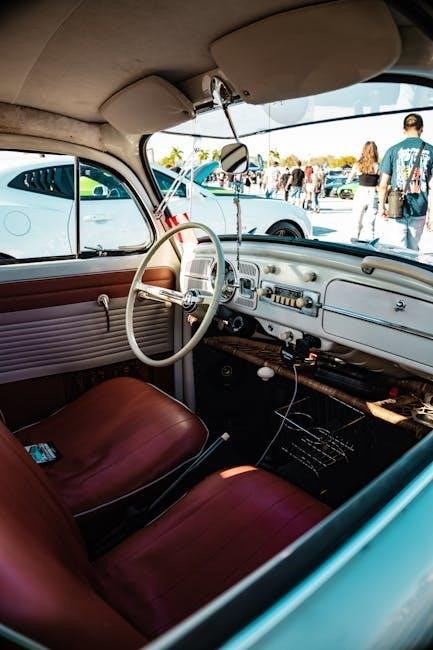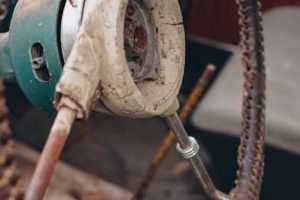Classic car owner manuals are essential resources for understanding, maintaining, and preserving vintage vehicles. They provide detailed insights into operation, maintenance, and repairs, serving as invaluable guides for enthusiasts and restorers.
1.1 Overview of Classic Car Owner Manuals
Classic car owner manuals are comprehensive guides tailored for specific vehicle models, detailing their operation, maintenance, and repair. These manuals are designed to help owners understand their cars’ mechanics, features, and requirements. They typically include sections on routine maintenance, troubleshooting, and safety precautions, ensuring optimal performance and longevity. Additionally, they often cover technical specifications, recommended tools, and diagnostic procedures. For enthusiasts and restorers, these manuals are invaluable, offering insights into the vehicle’s original design and intended functionality. They serve as a bridge between the car’s past and present, preserving its heritage while aiding modern preservation efforts. Their detailed content makes them indispensable for anyone aiming to maintain or restore a classic car authentically.
1.2 Historical Significance of Owner Manuals
Classic car owner manuals hold significant historical value, serving as time capsules that document the evolution of automotive design and technology. They provide insights into the era in which the vehicles were produced, reflecting the engineering advancements and cultural influences of their time. These manuals often contain original specifications, diagrams, and manufacturer recommendations, offering a glimpse into the intentions of the car’s creators. Additionally, they serve as educational tools, helping enthusiasts and restorers understand the authentic operation and maintenance of vintage vehicles. Their historical significance extends beyond practical use, as they preserve the legacy of classic cars and the stories they embody, making them cherished artifacts among collectors and historians alike.
1.3 Purpose of Owner Manuals for Classic Cars
Classic car owner manuals are designed to provide essential guidance for the maintenance, operation, and repair of vintage vehicles. They serve as comprehensive resources, detailing everything from routine servicing to complex diagnostics. These manuals help owners understand their cars’ unique characteristics, ensuring proper care and preservation. They often include troubleshooting guides, technical specifications, and recommendations for parts and tools. By following the manual, owners can maintain their cars’ authenticity and performance, which is crucial for both functionality and value retention. Additionally, these manuals empower enthusiasts to handle repairs and restorations confidently, making them indispensable for anyone passionate about classic cars.
1.4 Cultural Relevance of Classic Car Manuals
Classic car manuals hold significant cultural value as historical artifacts, reflecting the design, engineering, and aesthetics of their era. They serve as a window into the past, capturing the voice and intent of manufacturers. These manuals often feature vintage imagery, language, and branding, making them nostalgic treasures for enthusiasts. Beyond practical use, they embody the spirit of their time, offering insights into automotive history and societal trends. For collectors, classic car manuals are highly sought after, adding depth to a vehicle’s provenance and enhancing its collectibility. They bridge the gap between past and present, connecting owners to the heritage of their cars.
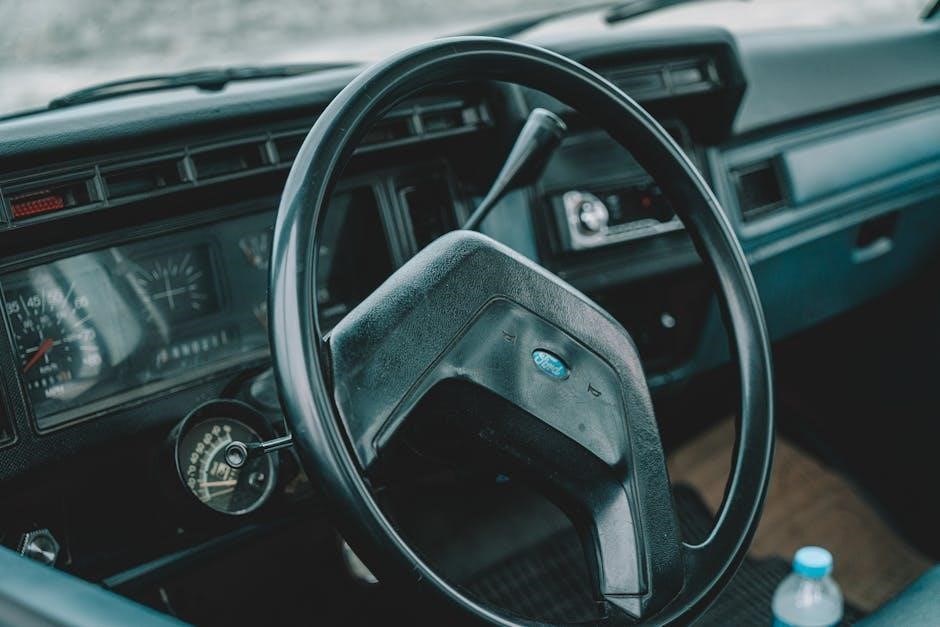
Where to Find Classic Car Owner Manuals
Classic car owner manuals can be found on manufacturer websites, third-party databases, classic car forums, auction houses, or libraries. They are often available for download or purchase.
2.1 Manufacturer Websites and Archives
Manufacturer websites and archives are primary sources for classic car owner manuals. Many automotive brands maintain extensive digital libraries, offering free downloads or purchasable copies of vintage manuals. These resources are often searchable by make, model, and year, ensuring enthusiasts can access accurate documentation. Additionally, some manufacturers provide archived materials through dedicated portals or customer support channels. These manuals are invaluable for restoration projects, as they contain original specifications, maintenance schedules, and repair guidelines. While some may require registration or payment, they remain the most reliable source for authentic, factory-issued guides. This ensures owners can trust the information for maintaining their classic vehicles authentically.
2.2 Third-Party Databases and Libraries
Third-party databases and libraries are excellent resources for locating classic car owner manuals. Websites like ManualsLib and other specialized platforms aggregate manuals from various manufacturers, offering easy access to rare and hard-to-find documents. These databases often cater to vintage car enthusiasts, providing comprehensive collections organized by make, model, and year. Additionally, libraries and archives, both physical and digital, may house original or scanned copies of classic manuals. While these sources are convenient, it’s important to verify the authenticity and accuracy of the documents, as some may be outdated or incomplete. Nonetheless, they remain invaluable for enthusiasts seeking guidance on maintaining and restoring their classic vehicles. Always cross-check information to ensure reliability.
2.3 Classic Car Forums and Communities
Classic car forums and communities are vibrant hubs where enthusiasts share knowledge, resources, and experiences. Many forums dedicated to specific car brands or models offer downloadable owner manuals, scanned and shared by members. These platforms also provide guidance on maintenance, troubleshooting, and restoration, often referencing original manuals. Additionally, members may offer rare or hard-to-find manuals for exchange or download. Engaging with these communities not only helps locate manuals but also fosters connections with experts and like-minded enthusiasts. Regularly visiting these forums can lead to discovering valuable resources and staying updated on the latest findings in the classic car world. These spaces are invaluable for both novice and seasoned collectors alike.
2.4 Auction Houses and Specialty Dealers
Auction houses and specialty dealers often include rare classic car owner manuals as part of their lots or sales. These manuals, especially those in pristine condition, can significantly enhance the value of a classic car. Dealers may also offer manuals specific to certain models, providing buyers with essential information for maintenance and restoration. Some dealers even specialize in vintage automotive literature, making them a valuable resource for enthusiasts. Additionally, auction houses may bundle manuals with vehicles, adding to the car’s provenance and appeal. These sources are particularly useful for rare or hard-to-find manuals, making them a worthwhile avenue for collectors seeking authentic documentation for their classic cars.
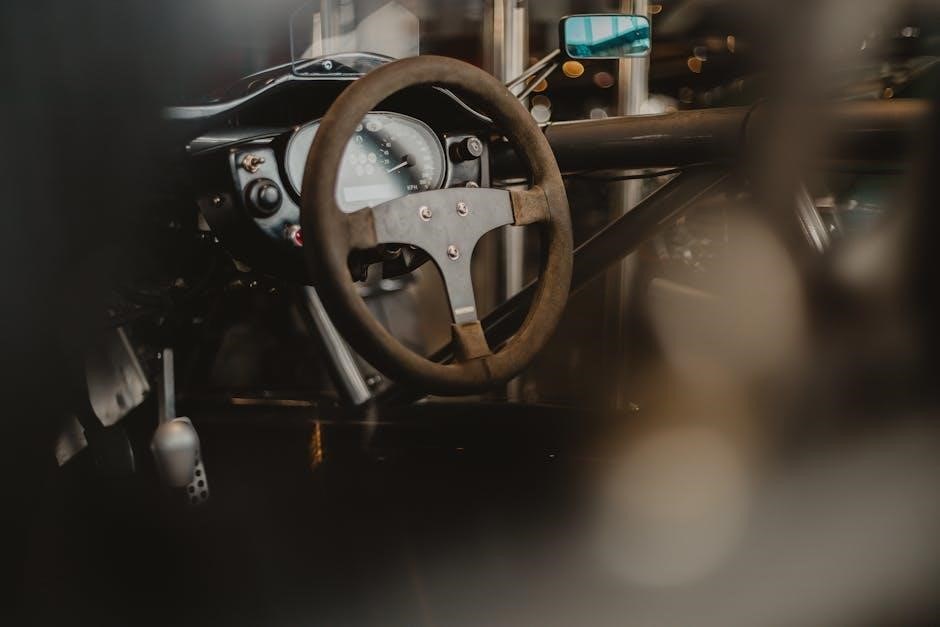
How to Read and Interpret Classic Car Manuals

Understanding symbols and abbreviations is key to interpreting classic car manuals. Follow structured guides for diagnostics, maintenance, and technical specifications to ensure effective use.
3.1 Understanding Symbols and Abbreviations
Understanding symbols and abbreviations in classic car manuals is crucial for effective interpretation; These elements convey complex information concisely, ensuring clarity for maintenance and repairs; Common symbols include warning signs for critical systems, while abbreviations like “ATF” (Automatic Transmission Fluid) simplify terminology. Familiarizing oneself with these aids in identifying components, diagnosing issues, and following procedures accurately. Manuals often include a legend or glossary section explaining these symbols and terms, making them indispensable for both novice and experienced enthusiasts. Mastering these elements ensures safer and more efficient work on classic vehicles, preventing misunderstandings and potential damage. Regular reference to these guides enhances overall proficiency in handling vintage cars.
3.2 Navigating Maintenance Schedules
Navigating maintenance schedules in classic car manuals is essential for preserving the vehicle’s condition and longevity. These schedules outline recommended timelines for routine services, such as oil changes, tire rotations, and fluid checks. They often include mileage-based intervals, ensuring that critical systems are inspected and serviced before potential issues arise. Manuals may also differentiate between standard and severe driving conditions, adjusting maintenance frequencies accordingly. By following these schedules, owners can prevent breakdowns, maintain performance, and ensure safety. Regular adherence to these guidelines helps in identifying wear and tear early, saving costs and effort in the long run. Maintenance schedules are a cornerstone of responsible classic car ownership, ensuring the vehicle remains reliable and functional for years to come.
3.3 Troubleshooting Guides and Diagnostic Tips
Troubleshooting guides in classic car manuals provide step-by-step methods to identify and resolve common issues. These sections often list symptoms, such as unusual noises, poor performance, or warning lights, and link them to potential causes. Diagnostic tips may include visual inspections, electrical system checks, or fluid evaluations. Manuals also offer repair guidance, helping owners address problems effectively. By following these guides, enthusiasts can pinpoint faults without extensive mechanical knowledge. Many manuals emphasize preventive measures, reducing the likelihood of breakdowns. These resources are invaluable for maintaining classic cars, ensuring they run smoothly and preserving their longevity. Troubleshooting sections empower owners to tackle repairs confidently, fostering a deeper connection with their vehicles.
3.4 Technical Specifications and Recommendations
Classic car owner manuals provide detailed technical specifications, ensuring authenticity and performance. They outline exact torque values, fluid types, and part compatibility, crucial for restoration and maintenance. These guides help owners avoid incompatible modern components, preserving the car’s original integrity. Recommendations often include approved lubricants and replacement parts, tailored to the vehicle’s era and design. Adhering to these specs ensures safety, optimal functionality, and compliance with historical standards. For restorers, these details are invaluable, guiding precise repairs and upgrades. By following the manual’s technical advice, enthusiasts can maintain their classic cars’ authenticity and value, ensuring they remain reliable and true to their original form for years to come.
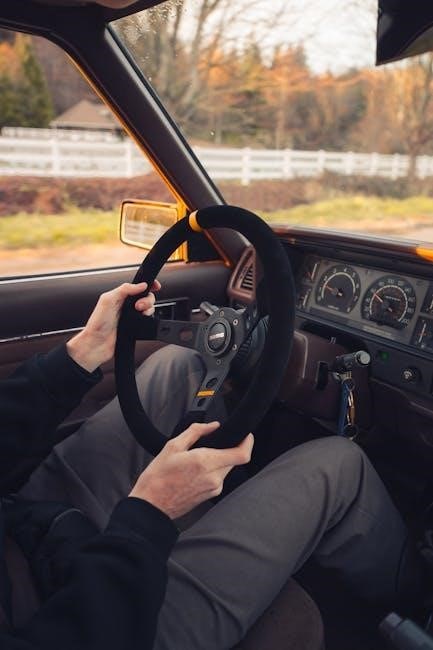
The Importance of Owner Manuals for Classic Car Maintenance
Classic car owner manuals are vital for maintaining vehicle health, providing guidance on routine care, troubleshooting, and technical specs to ensure safety and longevity.
4.1 Role in Routine Maintenance and Repairs
Classic car owner manuals play a crucial role in routine maintenance and repairs by providing detailed schedules, part specifications, and troubleshooting guides. They outline essential tasks like oil changes, tire rotations, and fluid checks, ensuring the vehicle runs smoothly. Manuals also include diagrams and instructions for common repairs, helping owners address issues before they escalate. By following the manual, enthusiasts can avoid costly mistakes and maintain their car’s original integrity. Neglecting these guidelines may lead to decreased performance or damage, while adhering to them ensures reliability and longevity. Thus, owner manuals are indispensable for preserving classic cars and keeping them in pristine condition for years to come.
4.2 Guidance for Restoration Projects
Classic car owner manuals are invaluable for restoration projects, offering a detailed roadmap for returning vehicles to their original condition. They provide specifications for parts, tools, and techniques, ensuring authenticity and functionality. Manuals often include diagrams and step-by-step instructions, which are crucial for rebuilding engines, transmissions, and other complex systems. Additionally, they outline recommended practices for interior and exterior refurbishment, helping restore the car’s aesthetic and historical accuracy. By following the manual, restorers can avoid costly mistakes and ensure compatibility of modern components with vintage designs. This guidance not only preserves the car’s heritage but also enhances its value and reliability for future generations.
4.3 Ensuring Safety and Compliance
Classic car owner manuals play a crucial role in ensuring safety and compliance, providing detailed guidelines for proper vehicle operation and maintenance. They outline essential safety checks, such as brake inspections, fluid levels, and electrical system health, to prevent potential hazards. Compliance with legal standards is also addressed, including emissions and noise regulations. Manuals often include specifications for retrofitting modern safety features while maintaining the car’s authenticity. Regular maintenance schedules ensure the vehicle remains roadworthy, aligning with current laws. Understanding and adhering to these guidelines is vital for preventing issues and ensuring the classic car is both safe and legally compliant to operate, preserving its heritage while meeting modern safety expectations.
4.4 Preserving the Value of Classic Cars
Classic car owner manuals are instrumental in preserving the value of vintage vehicles by providing detailed maintenance and restoration guidelines. Adhering to these manuals ensures that repairs and modifications align with the car’s original specifications, maintaining its authenticity. Proper documentation of maintenance and repairs, as outlined in the manual, can significantly enhance the car’s value. Additionally, manuals serve as historical records, offering insights into the car’s intended design and operation. By following the recommendations, owners can prevent unnecessary modifications that might detract from the car’s original charm. This careful stewardship not only protects the car’s heritage but also retains or increases its market value over time, making it a prized possession for collectors and enthusiasts alike.
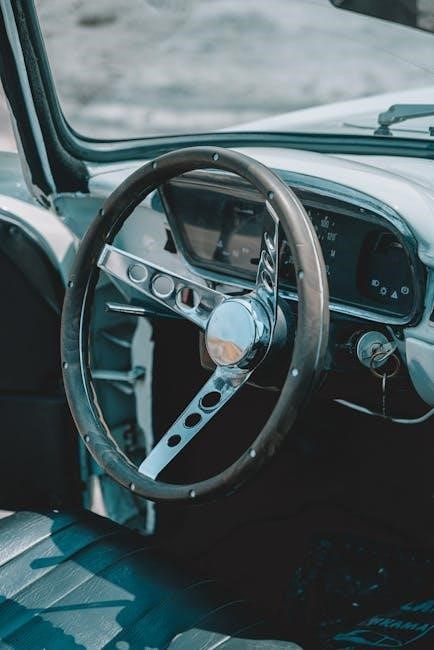
How to Use Classic Car Manuals Effectively
Understand the manual’s structure, apply its guidance for maintenance and repairs, and reference it regularly to ensure proper care and customization of your classic car.
5.1 Best Practices for Referencing Manuals
For effective referencing, start by thoroughly understanding the manual’s structure and content. Use the index or table of contents to quickly locate specific information. Regularly review maintenance schedules and troubleshooting guides to stay proactive. When addressing repairs, cross-reference diagrams and instructions to ensure accuracy. Keep the manual in an easily accessible location, such as the glove compartment or a workshop. For digital versions, bookmark frequently used sections. Consistently applying these practices enhances your ability to maintain and restore your classic car, ensuring reliability and preserving its value over time.
5.2 Applying Diagnostic Techniques
Applying diagnostic techniques effectively begins with a thorough understanding of the manual’s troubleshooting section. Start by identifying symptoms and cross-referencing them with the manual’s diagnostic charts. Use specific keywords like “error codes” or “performance issues” to locate relevant information quickly. Leverage online databases and forums for additional insights, ensuring you verify credibility. Regularly update your knowledge with the latest tools and methods. By systematically applying these techniques, you can pinpoint issues accurately, reducing guesswork and saving time. This approach not only enhances your diagnostic skills but also prolongs your classic car’s lifespan and performance.
5.3 Customizing and Modifying Classic Cars
Customizing and modifying classic cars requires a deep understanding of the vehicle’s original design and specifications. Owner manuals provide a foundation for identifying compatible parts and ensuring modifications align with the car’s historical integrity. Researching online databases and forums can offer inspiration and practical advice. When making changes, always consult the manual to avoid compromising safety or performance. Documenting modifications is crucial for future maintenance and resale value. Balancing personal style with period-correct aesthetics ensures the car remains authentic. By combining creativity with manual guidance, enthusiasts can create unique yet respectful modifications that enhance the classic car’s appeal while preserving its heritage.
5.4 Avoiding Common Mistakes

Avoiding common mistakes when using classic car manuals requires attention to detail and adherence to guidelines. One frequent error is overlooking specific instructions for your car’s make and model. Always verify compatibility before applying advice. Misinterpreting symbols or abbreviations can lead to costly repairs, so familiarize yourself with the manual’s terminology. Another mistake is skipping preliminary checks before starting repairs, which can worsen issues. Using incorrect tools or ignoring safety precautions is dangerous and avoidable. By carefully following the manual and cross-referencing information, enthusiasts can prevent errors and ensure successful maintenance or modifications. Proper organization of tools and materials also minimizes mistakes. Remember, patience and thoroughness are key to avoiding pitfalls when working with classic cars.
Troubleshooting Common Issues with Classic Cars
Classic car manuals are essential for diagnosing issues like fluid leaks, electrical malfunctions, and engine performance problems, offering clear guidance for effective troubleshooting and repairs.
6.1 Identifying Fluid Leaks and Damage
Fluid leaks are common issues in classic cars, often indicating worn seals or gaskets. Owner manuals provide detailed diagrams to locate potential leak sources, such as engines, radiators, or transmissions. They guide enthusiasts in identifying fluids by color and consistency, helping distinguish between coolant, oil, or brake fluid. Regular inspections, as outlined in manuals, can prevent minor leaks from becoming major repairs. Tips on using UV dyes or pressure tests are often included, ensuring accurate diagnoses. Addressing leaks promptly is crucial to avoid damage to components like cylinders or bearings. Manuals emphasize the importance of protective gear and safe cleanup to prevent hazards. Early detection and repair can save time and cost, preserving the car’s integrity and performance.
6.2 Addressing Electrical System Problems
Classic car owner manuals provide comprehensive guidance for diagnosing and resolving electrical system issues. Wiring diagrams are often included, helping owners trace faults in circuits, fuses, or connectors. Manuals recommend using multimeters to test voltage and continuity, ensuring accurate diagnoses. Common problems like faulty alternators, dead batteries, or corroded connections are addressed with step-by-step solutions. Tips on checking fuses, relays, and grounding points are standard. Many manuals emphasize the importance of isolating electrical components before repairs to prevent further damage. Safety precautions, such as disconnecting the battery, are highlighted to protect both the user and the vehicle. Regular electrical system maintenance, as outlined, helps prevent issues and ensures reliable performance. Consistent testing and inspection are encouraged for early detection of potential failures.
6.3 Solving Engine Performance Issues
Classic car owner manuals offer detailed guidance for identifying and resolving engine performance issues. Common problems such as poor fuel efficiency, rough idling, or misfires are addressed with step-by-step diagnostic procedures. Manuals often include troubleshooting charts to help pinpoint issues like faulty spark plugs, clogged fuel lines, or vacuum leaks. Instructions for conducting compression tests and interpreting results are typically provided to assess engine health. Tips for inspecting and cleaning or replacing components like air filters, carburetors, or ignition systems are standard. Many manuals emphasize the importance of routine maintenance, such as timing belt replacements or oil changes, to prevent engine deterioration. By following the manual’s recommendations, owners can restore optimal performance and ensure longevity of their classic car’s engine.
6.4 Dealing with Transmission and Gearbox Concerns
Classic car owner manuals provide comprehensive guidance for addressing transmission and gearbox issues. Common concerns include fluid leaks, unusual noises, or difficulty shifting gears. Manuals often outline diagnostic steps, such as checking transmission fluid levels, inspecting for leaks, and testing gear engagement. Instructions may also cover cleaning or replacing components like filters or gaskets. For more severe issues, manuals may guide owners through disassembly procedures to identify worn gears or bearings. By following the manual’s recommendations, enthusiasts can resolve transmission problems effectively, ensuring smooth operation and preventing further damage. Regular maintenance, as outlined in the manual, is key to avoiding costly repairs and prolonging the lifespan of the gearbox.
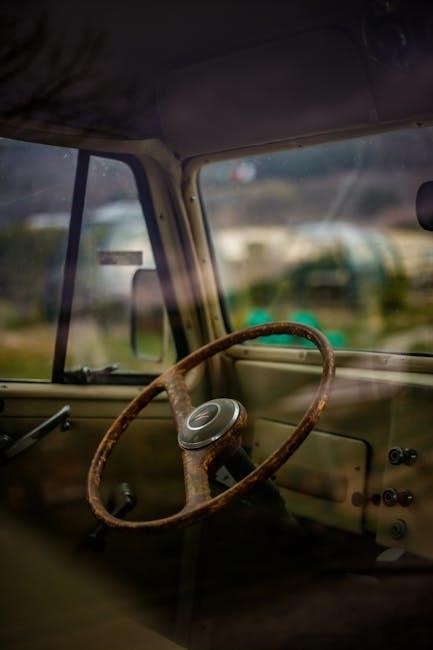
The Role of Owner Manuals in Classic Car Collectibility
Classic car owner manuals enhance collectibility by providing historical authenticity and detailed documentation, making them highly valuable to collectors and essential for preserving a car’s legacy.
7.1 Rarity and Value of Vintage Manuals
Vintage car manuals are highly sought after by collectors due to their rarity and historical significance. Original manuals, especially those in excellent condition, can significantly increase a car’s value. They often serve as a direct link to the car’s past, offering unparalleled authenticity. Rare manuals, such as those for limited-production models, can become valuable collector’s items. Their demand is driven by enthusiasts and restorers who rely on them for accurate information. As physical copies become scarce, digital versions have emerged, but nothing replaces the charm of an original manual. Their value lies not only in monetary terms but also in the stories they tell about automotive history.
7.2 Manuals as Part of a Car’s Historical Record
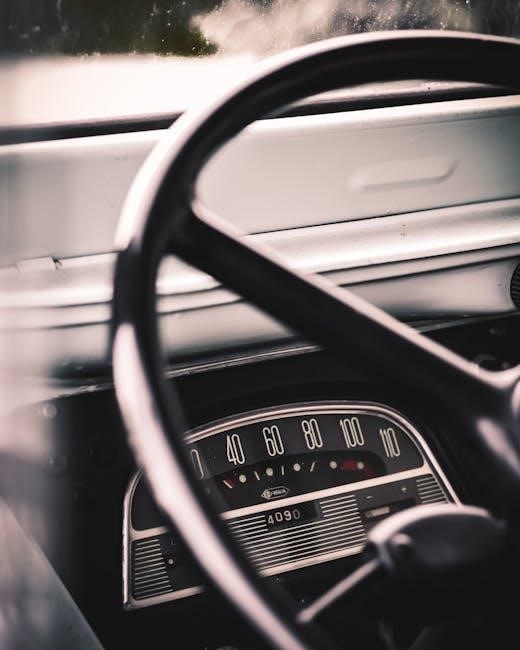
Classic car owner manuals are invaluable as historical records, documenting a vehicle’s evolution and authenticity. They provide detailed insights into original specifications, features, and maintenance requirements, serving as a direct link to the car’s past. These manuals often include technical details, compliance standards, and safety guidelines, offering a comprehensive understanding of the vehicle’s design and functionality. For collectors and historians, they are irreplaceable resources that verify a car’s heritage and condition. Manuals also play a crucial role in restoration projects, ensuring accuracy and preservation of the car’s historical integrity. Their historical significance extends beyond practical use, making them a cornerstone of automotive history and culture.

7.3 Impact on Collectors and Enthusiasts
Classic car owner manuals hold significant value for collectors and enthusiasts, serving as a bridge to the past. They provide detailed insights into a vehicle’s history, original specifications, and maintenance requirements, which are crucial for restoration projects. Collectors often seek these manuals to verify a car’s authenticity and condition, enhancing its value. Enthusiasts appreciate the manuals for their technical depth, offering a deeper understanding of the car’s design and functionality. These documents also serve as a resource for DIY restorations and repairs, empowering owners to maintain their vehicles authentically. Overall, classic car manuals are treasured possessions that enrich the ownership experience and preserve the heritage of vintage automobiles.
7.4 Manuals as a Tool for Investment Decisions
Classic car owner manuals play a pivotal role in investment decisions by providing transparency and detailed insights into a vehicle’s history and condition. Investors rely on these manuals to assess authenticity, understand maintenance needs, and evaluate potential restoration costs. The presence of an original manual can significantly enhance a car’s value, as it verifies its provenance and original specifications. Additionally, manuals offer a clear understanding of the vehicle’s technical requirements, helping investors avoid unforeseen expenses. For collectors and investors, these documents are indispensable tools for making informed decisions, ensuring that their investments are both sound and aligned with the car’s historical significance and market demand.
Classic car owner manuals are indispensable for maintenance, restoration, and cultural preservation, offering valuable insights and practical guidance while adapting to the digital age.
8.1 Summary of Key Points
Classic car owner manuals are vital resources for enthusiasts, providing detailed guidance on maintenance, repairs, and operation. They serve as historical records, preserving the legacy of iconic vehicles while offering practical advice for modern restorations. These manuals not only ensure safety and compliance but also help maintain the value and authenticity of classic cars. Their cultural significance extends beyond functionality, connecting owners to the heritage of their vehicles. With the rise of digital platforms, manuals are now more accessible, ensuring their relevance for future generations. Whether for routine upkeep or intricate restorations, these documents remain indispensable tools for classic car ownership and appreciation.
8;2 Final Thoughts on the Importance of Owner Manuals
Classic car owner manuals are indispensable resources for enthusiasts, serving as gateways to understanding, maintaining, and preserving vintage vehicles. They provide practical guidance, historical insight, and a connection to the heritage of classic cars. These manuals are not just technical documents but also cultural artifacts that bridge the past and present. Their importance lies in their ability to empower owners with knowledge, ensuring the longevity and authenticity of their vehicles. As the automotive world evolves, the preservation of these manuals in digital formats guarantees their relevance for future generations. They remain essential tools for both maintenance and cultural appreciation, cementing their value in the classic car community.
8.3 Encouragement to Preserve and Utilize Manuals
Preserving and utilizing classic car owner manuals is vital for maintaining the integrity and heritage of vintage vehicles. These manuals serve as invaluable resources for repairs, maintenance, and understanding the unique characteristics of classic cars. By digitizing and sharing these documents, enthusiasts can ensure their availability for future generations. Owners are encouraged to refer to these manuals regularly, as they provide precise guidance tailored to their specific vehicles. Additionally, manuals act as historical records, offering insights into the engineering and design of bygone eras. Embracing these resources fosters a deeper connection to classic cars and supports their continued enjoyment and preservation.
8.4 Future of Classic Car Owner Manuals in the Digital Age
The digital age has transformed the accessibility and utility of classic car owner manuals. With the rise of online databases and digitization efforts, these manuals are now readily available to enthusiasts worldwide. Websites like ManualsLib and manufacturer archives offer downloadable PDFs, ensuring that even rare manuals are preserved. Interactive features, such as searchable text and hyperlinked sections, enhance usability. This shift not only safeguards historical documents but also makes them more accessible to a new generation of classic car owners. Digital manuals are becoming indispensable tools for maintenance, restoration, and community collaboration, ensuring their relevance in an increasingly digital world.
